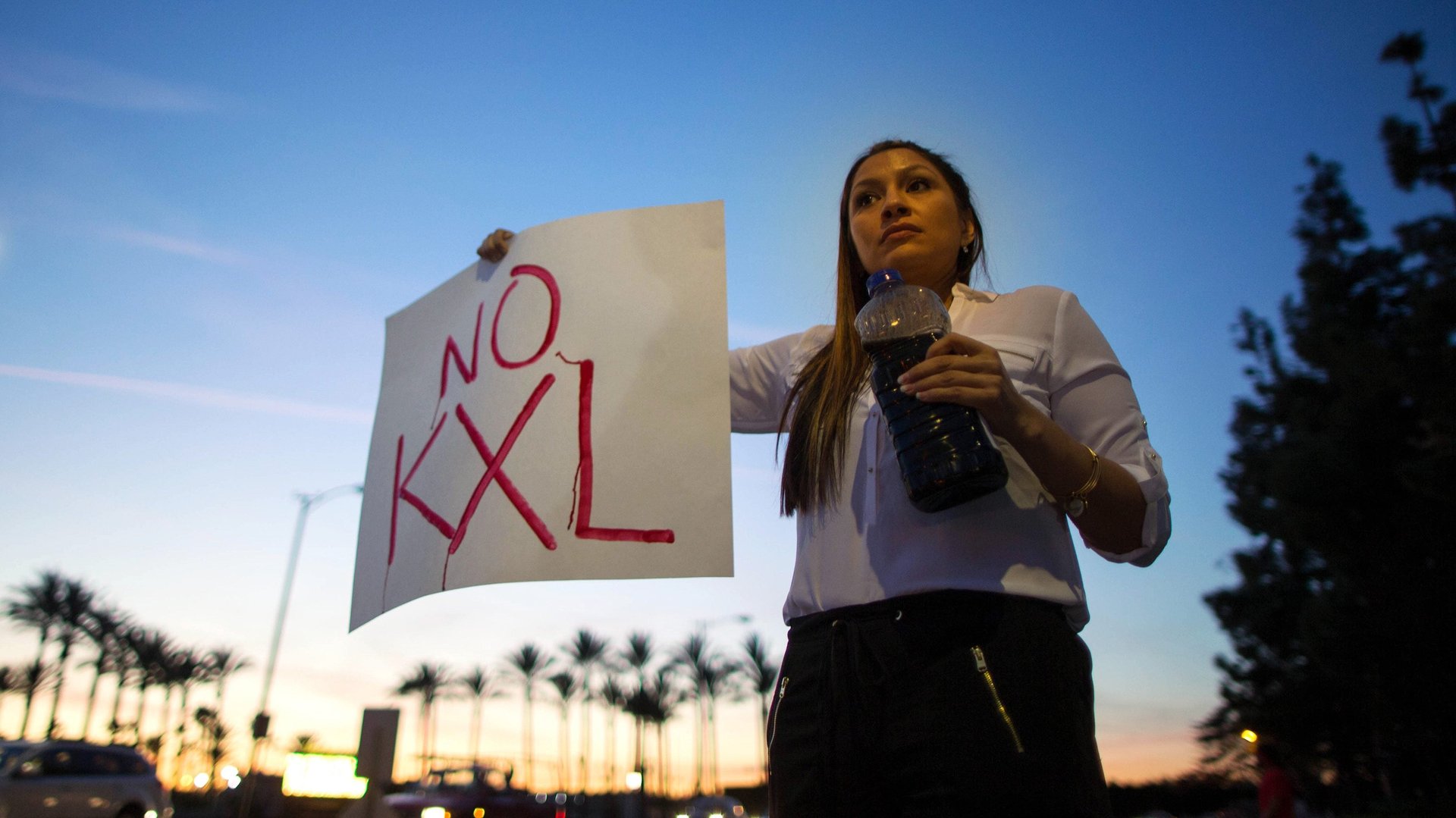The death of pipelines like Keystone XL won’t save the climate
The company behind the Keystone XL pipeline, intended to deliver oil from fields in western Canada to refineries in the US, finally pulled the plug on the project after a decade of intense opposition from environmental activists.


The company behind the Keystone XL pipeline, intended to deliver oil from fields in western Canada to refineries in the US, finally pulled the plug on the project after a decade of intense opposition from environmental activists.
The move by TC Energy on June 10 was mostly a formality: The project was actually killed off back in February when president Joe Biden revoked the pipeline’s permit to enter the US. But the demise of Keystone XL underscores gaps in the calculus of climate activism, and says as much about the significant obstacles to curbing greenhouse gas emissions as it does about progress toward that goal.
A win for climate activism?
Still, the decision was hailed by activists as a major victory in the global war against climate change. David Turnbull, a spokesperson for the advocacy group Oil Change International, called the decision in a statement “a confirmation that Big Oil is no match for people power,” and cited the contributions of “indigenous communities, landowners, farmers, ranchers, and climate activists along its route and around the world.”
Activists have now turned their attention to other pipelines, particularly the Line 3 expansion in Minnesota, where hundreds of protestors were arrested on the same day Keystone XL was axed. TC Energy stock appeared unaffected by the announcement, and the company posted $442 million in earnings in the first quarter despite a $1.8 billion impairment charge related to the Keystone cancellation. Shares of Enbridge, the company behind Line 3, posted a slight loss on June 10 but overall are up 17.6% from Jan. 1 thanks to recovery in the oil market from its pandemic depths.
Keystone proved that playing pipeline whack-a-mole can be effective, to the extent that activists succeeded in effectively forcing the hand of the US president by making the project unavoidably toxic, and by using it as a totem to rally general public support for climate action.
At the 2014 People’s Climate March in New York City, which drew more than 300,000 people and was possibly the biggest climate protest to date at the time, Keystone XL was ubiquitous on placards and in chants. Line 3 is already playing a similar role. But as long as the global economy remains thirsty for fossil fuels, the closure of individual pipelines will have little impact on net emissions.
The impact of the Keystone XL pipeline’s cancellation
“In our view, TC Energy’s official cancellation this week will have essentially no impact on [oil] production or emissions,” says Thomas Liles, vice president of the market research firm Rystad Energy. “On aggregate, we estimate that Canadian oil sands production will increase over the next decade, by around 1.5-2% annually to 2030. Additionally, the delay/cancellation of another newbuild would not necessarily be a death knell to production growth, as there are potential optimizations on existing pipeline systems that could provide incremental export capacity.”
There are some important caveats here. For one, a major driver of opposition to Keystone XL was not global climate change per se, but the risk of local pollution that could have occurred if the pipeline sprang a leak into the ecologically and culturally sensitive Ogallala Aquifer in Nebraska. That specific risk is now off the table.
Moreover, celebrity climate organizers like Bill McKibben have maintained for years that the Keystone fight was merely an entry point into a larger struggle to stop oil companies drilling without restrictions. One need only look at the mounting calls among financial regulators for banks and other companies to disclose their climate-related risks, or the increasing pressure by courts and shareholders on oil companies to slash emissions, to see that struggle gaining traction.
What happens next in the fight for clean energy?
But for climate activists, the next steps will be harder, with are fewer visible fossil fuel targets to focus on. In the US and Europe, coal-fired power plants, another obvious and longtime pariah, are already shuttering, and the electric power sector is making enough steady progress toward decarbonization that most analysts agree Biden’s goal to have a zero-carbon grid by 2035 is probably well within reach.
But oil, which remains the biggest source of emissions in the US, will be harder to quit. In key oil-thirsty sectors—aviation, shipping, plastics, factories—progress toward decarbonization is slower largely because scalable alternatives don’t yet exist, even as more customers for these sectors appear in emerging economies. That’s a bigger problem than any pipeline. Overall, the International Energy Agency expects global oil demand to rise 6% above pre-pandemic levels by 2040. Bringing that number down—the only thing that ultimately counts, climate-wise—will require significant public and private investment in technological innovation.
Activists need symbols, and Keystone XL, in addition to the tangible threats it posed, was a great one. The same goes for Line 3. But it’s no longer enough to take a stand against the fossil economy, because the public needs something to root for. Tesla, which has done more than any company to make clean energy sexy, is the prime example of how to capitalize on that sentiment.
Now, the challenge is to harness the momentum that brought down the Keystone XL pipeline, and channel it into pressure on political and business leaders to develop, with haste, a cleaner, more equitable economy.